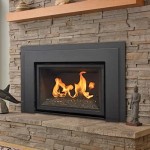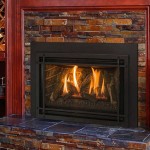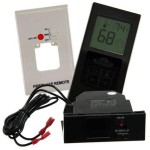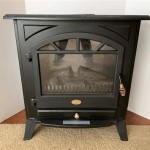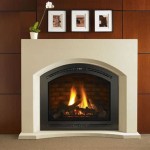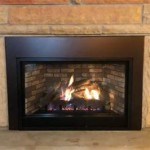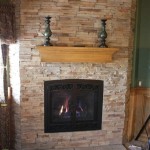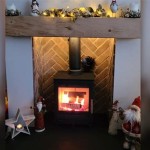Gas Stove Inserts For Fireplaces: A Detailed Overview
Gas stove inserts offer a practical and aesthetically pleasing method for enhancing the efficiency and appeal of existing fireplaces. These inserts, designed to fit directly into a fireplace opening, convert a traditionally inefficient wood-burning fireplace into a convenient and effective heating source fueled by natural gas or propane. This article provides a comprehensive overview of gas stove inserts, exploring their functionality, benefits, installation considerations, and available options.
The primary function of a gas stove insert is to provide supplemental heat to a designated area within a home. Unlike traditional open fireplaces, which lose a significant portion of their heat up the chimney, gas stove inserts are designed for maximum heat retention and distribution. They achieve this through the use of sealed combustion chambers, efficient heat exchangers, and often, integrated blowers that circulate warm air into the room. This closed combustion system also enhances safety by preventing the backdrafting of combustion gases into the living space.
Gas stove inserts come in a variety of styles and sizes, allowing homeowners to select an option that seamlessly integrates with their existing décor. From traditional designs that mimic the appearance of classic wood stoves to more contemporary models with sleek lines and minimalist aesthetics, there is a gas stove insert to complement virtually any architectural style. The choice of materials, such as cast iron, steel, or a combination thereof, also contributes to the overall look and feel of the insert, as well as its durability and heat retention capabilities.
Key Advantages of Gas Stove Inserts
Gas stove inserts present several distinct advantages over traditional wood-burning fireplaces, contributing to their growing popularity among homeowners. These advantages include increased heating efficiency, ease of use, improved safety, and reduced environmental impact.
Firstly, heating efficiency is significantly improved. Open fireplaces are notorious for their poor efficiency, with much of the generated heat escaping through the chimney. Gas stove inserts, on the other hand, are designed to maximize heat output and minimize heat loss. Modern models often boast efficiency ratings of 70% or higher, meaning that a greater proportion of the fuel's energy is converted into usable heat. This enhanced efficiency translates into lower heating costs and a more comfortable indoor environment. The inclusion of features like thermostatic controls allows homeowners to precisely regulate the temperature, further optimizing energy consumption.
Secondly, gas stove inserts offer unparalleled ease of use. Unlike wood-burning fireplaces, which require the manual handling of firewood, the chore of kindling, and consistent monitoring, gas stove inserts can be operated with the simple flip of a switch or the press of a button. Many models also come with remote controls or programmable thermostats, providing even greater convenience and control. This ease of use makes gas stove inserts an ideal heating solution for individuals with mobility issues or those seeking a hassle-free alternative to traditional fireplaces.
Thirdly, safety is enhanced. Gas stove inserts incorporate several safety features to protect homeowners and their families. The sealed combustion chamber prevents backdrafting, reducing the risk of carbon monoxide poisoning. Many models also include safety shut-off valves that automatically cut off the gas supply in the event of a malfunction or flame outage. The absence of sparks and embers eliminates the risk of fire hazards associated with wood-burning fireplaces. Furthermore, the glass front of the insert remains relatively cool to the touch, minimizing the risk of accidental burns.
Finally, gas stove inserts contribute to a reduced environmental impact. Burning wood releases particulate matter and other pollutants into the atmosphere, contributing to air pollution and respiratory problems. Gas, on the other hand, burns much cleaner than wood, producing significantly fewer emissions. While natural gas is a fossil fuel and its combustion does release carbon dioxide, a greenhouse gas, the overall environmental footprint of a gas stove insert is generally lower than that of a traditional wood-burning fireplace.
Installation Considerations for Gas Stove Inserts
The installation of a gas stove insert typically involves several steps and considerations to ensure proper functionality and safety. It is generally recommended to hire a qualified and licensed professional for the installation process, as it involves working with gas lines and venting systems.
Before installation can begin, it is crucial to assess the existing fireplace and chimney to determine their suitability for a gas stove insert. The chimney must be inspected for structural integrity and proper draft, and it may need to be cleaned or relined to meet safety standards. The size of the fireplace opening must also be measured to ensure that the chosen insert will fit properly. In some cases, modifications to the fireplace opening may be necessary.
The gas line connection is a critical aspect of the installation process. A qualified technician will need to run a gas line from the main gas supply to the fireplace location and connect it to the gas stove insert. This connection must be made in accordance with local building codes and safety regulations. Proper leak testing is essential to ensure that there are no gas leaks in the system.
Venting is another essential consideration. Gas stove inserts typically require a dedicated venting system to safely exhaust combustion gases. This venting system can be either direct vent or natural vent, depending on the type of insert and the configuration of the fireplace and chimney. Direct vent systems draw combustion air from outside the home and exhaust combustion gases directly to the outside, while natural vent systems rely on the natural draft of the chimney to exhaust combustion gases. The venting system must be properly sized and installed to prevent backdrafting and ensure efficient combustion.
Once the gas line and venting system are in place, the gas stove insert can be carefully placed into the fireplace opening. The insert should be properly secured and leveled to ensure stability. The connections to the gas line and venting system should be checked for leaks and proper alignment. Finally, the insert should be tested to ensure that it is functioning correctly and that all safety features are operational.
Types and Features of Gas Stove Inserts
Gas stove inserts are available in a variety of types and configurations, each offering different features and benefits to suit specific needs and preferences. Understanding these different options is crucial for making an informed decision when selecting a gas stove insert.
Based on venting systems, there are two primary types: direct vent and natural vent inserts. Direct vent inserts are the most common type, as they offer greater flexibility in terms of installation and location. They do not rely on an existing chimney and can be vented horizontally through an exterior wall, making them suitable for homes without a traditional chimney. Natural vent inserts, on the other hand, require a functioning chimney and rely on its natural draft to exhaust combustion gases. They are typically less expensive than direct vent inserts, but their installation is more restrictive.
Gas stove inserts also vary in terms of their heating capacity, measured in British Thermal Units (BTUs). The appropriate BTU rating for an insert depends on the size of the room it is intended to heat and the climate in which the home is located. A higher BTU rating indicates a greater heating capacity. It is important to choose an insert with an appropriate BTU rating to ensure that it can adequately heat the desired space without being oversized or undersized.
Several features can further enhance the functionality and appeal of gas stove inserts. Thermostatic controls allow homeowners to precisely regulate the temperature, optimizing energy consumption and comfort. Remote controls provide added convenience and control, allowing homeowners to adjust the flame height, temperature, and blower speed from a distance. Some models also include programmable thermostats, allowing homeowners to schedule heating cycles to match their daily routines. Decorative features, such as realistic log sets, glowing embers, and adjustable flame patterns, can further enhance the aesthetic appeal of the insert.
Furthermore, the material used for the insert's construction plays a significant role in its performance and aesthetics. Cast iron inserts are known for their exceptional heat retention and durability, while steel inserts offer a more modern and sleek appearance. Some inserts combine both materials, leveraging the strengths of each to create a product that is both functional and visually appealing. The choice of material ultimately depends on the homeowner's personal preferences and budget.
In conclusion, gas stove inserts represent a significant upgrade over traditional wood-burning fireplaces, offering increased heating efficiency, ease of use, improved safety, and a reduced environmental impact. Careful consideration of installation requirements, venting options, heating capacity, and available features is essential for selecting the right gas stove insert to meet individual needs and preferences. By investing in a high-quality gas stove insert and ensuring proper installation, homeowners can enjoy the warmth and ambiance of a fireplace without the drawbacks of traditional wood-burning models.

Fireplace Insert Guide Fireplaces Direct Learning Center

A Step By Guide To Understanding Fireplace Inserts

Infrared X3 Xir3 Ambassador Fireplaces

Fireplace Inserts Mountain West S

Gas Fireplace Inserts Lopi Stoves Made In Usa

Fireplace Inserts Wood Gas Pellet

Gas Fireplace Inserts The Place Fairfield

Fireplace Insert Installation Wood Inserts Gas Pellet And Electric

Gas Fireplace Inserts Lopi Stoves Made In Usa

What S Best A Fireplace Stove Or Insert We Love Fire

